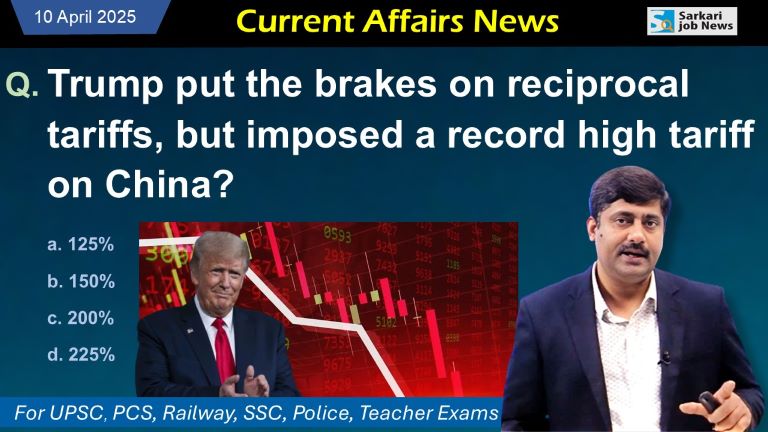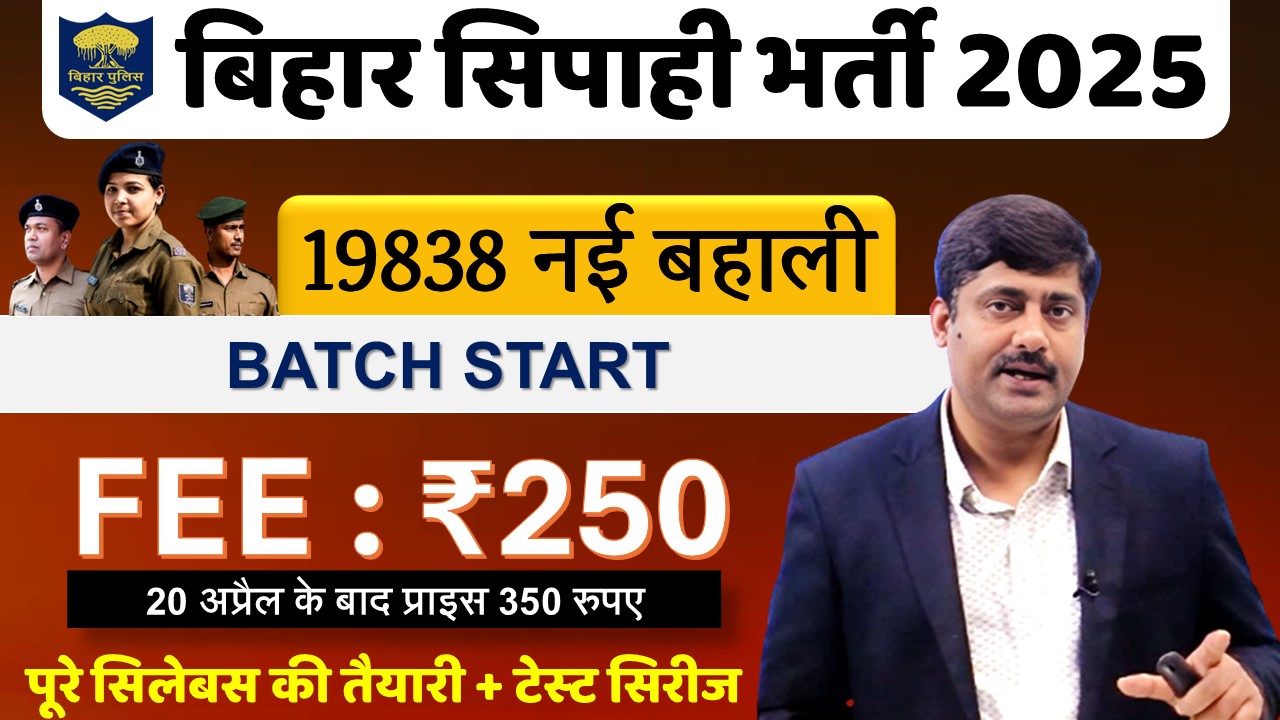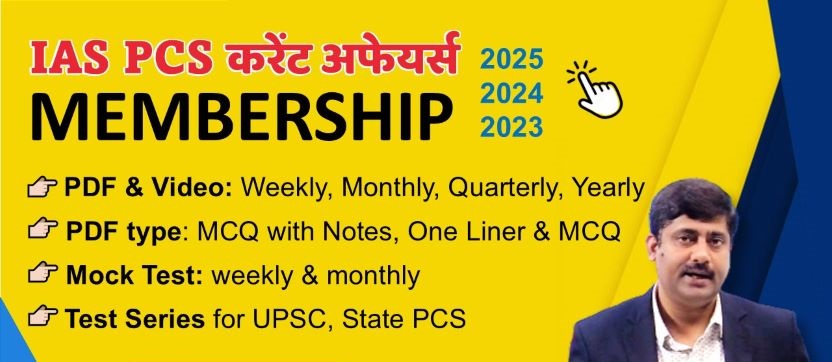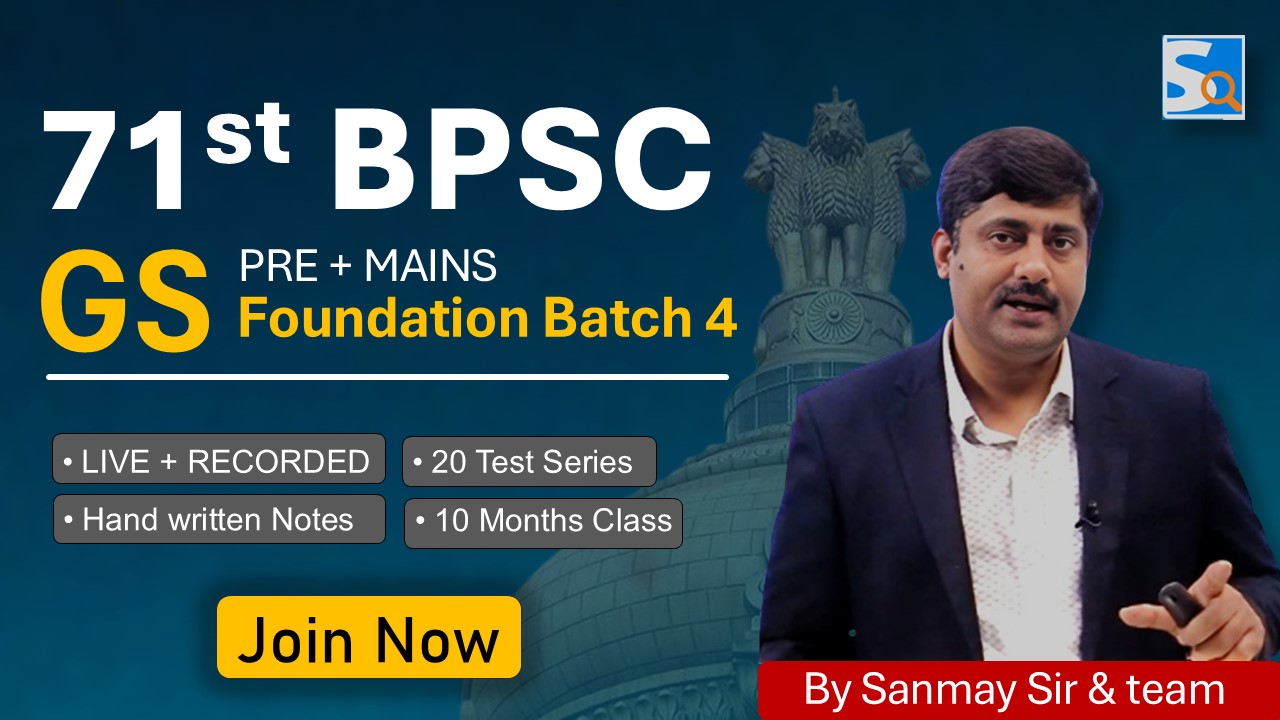This is the current affairs of 10 April 2025. Here are questions and answers of daily current affairs for better preparation of competitive exams for government jobs.
PDF Download: Click here
1. After the merger of rural banks under the ‘One State One RRB’ policy, the total number of rural banks in the country decreased from 43 to how many?
a. 38
b. 28
c. 18
d. 8
Answer: b. 28
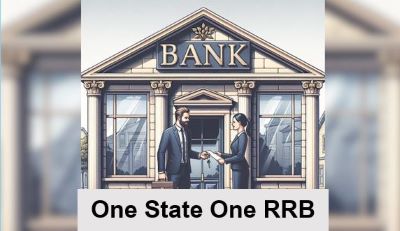
– From May 1, 2025, the number of rural banks will decrease from 43 to 28.
Why was the merger done?
– The merger process was initiated with the aim of improving the performance and efficiency of regional rural banks.
– The central government is merging banks to improve their services and reduce costs.
– Now, the government has started the fourth merger of Regional Rural Banks (RRBs) to enhance banking services and reduce costs.
One State, One RRB
– The objective of ‘One State, One RRB’, according to the Ministry of Finance’s notification, is that under Section 23A(1) of the Regional Rural Banks Act, 1976, RRBs in 11 states and union territories will be merged into one unit.
Which 11 states and UT will see the merger of banks?
– Uttar Pradesh, Andhra Pradesh, West Bengal, Bihar, Gujarat, Jammu & Kashmir, Karnataka, Madhya Pradesh, Maharashtra, Odisha, and Rajasthan.
No less than 51% shareholding:
– The central government holds a 50% stake in Regional Rural Banks (RRBs). The sponsoring public sector banks hold 35%, and the states hold 15%. According to the amended act, even after reducing the shareholding, the central government and sponsoring banks’ combined shareholding cannot be less than 51%.
Banks will have ₹2,000 crore capital:
– According to the notification, all regional rural banks will have an authorized capital of ₹2,000 crore. Prior to the integration, the government has also injected capital into these banks.
The number of rural banks in the country will now be 28:
– This will be the fourth phase of the RRB integration. Once completed, the number of such banks will reduce from the current 43 to 28.
– In fact, the central government initiated the structural integration of RRBs in the fiscal year 2004-05.
– Under this, the number of RRBs reduced from 196 in 2020-21 to 43 in three phases.
– Now, in the fourth phase, this number has decreased to 28.
Objectives of Regional Rural Banks:
– Expanding banking services in rural areas.
– Providing affordable loans to farmers, agricultural laborers, and cottage industries.
– Supporting rural development in areas such as agriculture, livestock, horticulture, handicrafts, etc.
– Promoting cashless transactions and strengthening financial inclusion.
– Encouraging self-employment and reducing unemployment.
– Supporting small and cottage industries.
– Accepting deposits and providing account services.
– Assisting in rural development schemes.
– Implementing government schemes such as Jan Dhan Yojana, pension schemes, etc.
Establishment of Rural Banks:
– When: October 2, 1975, to provide special banking services for rural areas.
– Under which law: Legal basis: Regional Rural Banks Act, 1976.
– The main body regulating RRBs: The primary body regulating Regional Rural Banks (RRBs) is the Reserve Bank of India (RBI), which is responsible for regulating banking and financial services in rural areas, while NABARD (National Bank for Agriculture and Rural Development) supervises them.
Who was the first RRB?
– The first rural bank, Prathama Bank, was established on October 2, 1975, in Moradabad, Uttar Pradesh. Later, it merged into Prathama UP Gramin Bank.
As of May 1, 2025, there will be 28 RRBs:
– Andhra Pradesh: Andhra Pradesh Grameen Bank
– Arunachal Pradesh: Arunachal Pradesh Grameen Bank
– Assam: Assam Gramin Vikas Bank
– Bihar: Bihar Gramin Bank
– Chhattisgarh: Chhattisgarh Rajya Gramin Bank
– Gujarat: Gujarat Gramin Bank
– Haryana: Sarv Haryana Gramin Bank
– Himachal Pradesh: Himachal Pradesh Gramin Bank
– Jammu and Kashmir: Jammu and Kashmir Gramin Bank
– Jharkhand: Jharkhand Rajya Gramin Bank
– Karnataka: Karnataka Gramin Bank
– Kerala: Kerala Gramin Bank
– Madhya Pradesh: Madhya Pradesh Gramin Bank
– Maharashtra: Maharashtra Gramin Bank
– Manipur: Manipur Gramin Bank
– Meghalaya: Meghalaya Gramin Bank
– Mizoram: Mizoram Gramin Bank
– Nagaland: Nagaland Gramin Bank
– Odisha: Odisha Gramin Bank
– Puducherry: Puduvai Bharatiyar Grama Bank
– Punjab: Punjab Gramin Bank
– Rajasthan: Rajasthan Gramin Bank
– Tamil Nadu: Tamil Nadu Grama Bank
– Telangana: Telangana Grameen Bank
– Tripura: Tripura Gramin Bank
– Uttar Pradesh: Uttar Pradesh Gramin Bank
– Uttarakhand: Uttarakhand Gramin Bank
– West Bengal: West Bengal Gramin Bank
Source : Hindu Business Line | Financial Express
—————
2. Two rural banks of Bihar (North Bihar Gramin Bank and South Bihar Gramin Bank) were merged, now tell its name?
a. Magadh Gramin Bank
b. Sampoorna Bihar Gramin Bank
c. Bihar State Development Bank
d. Bihar Gramin Bank
Answer: d. Bihar Gramin Bank
– The Ministry of Finance has issued a notification regarding the merger of both rural banks of Bihar, North Bihar Gramin Bank and South Bihar Gramin Bank.
– The merger will be effective from May 1, 2025.
– The new name will be Bihar Gramin Bank.
– It will have 2,105 branches across the entire state, making it the largest bank in Bihar.
– Punjab National Bank is the sponsor bank, and the head office will be located in Patna.
– Before the merger, North Bihar Gramin Bank was sponsored by Central Bank, and South Bihar Gramin Bank was sponsored by Punjab National Bank.
————–
3. Three rural banks of Uttar Pradesh (Baroda UP Gramin Bank, Aryavart Gramin Bank and Prathama UP Gramin Bank) have been merged, now tell its name?
a. Prayag Gramin Bank
b. Avadh Gramin Bank
c. Uttar Pradesh Gramin Bank
d. None of these
Answer: c. Uttar Pradesh Gramin Bank
– The Ministry of Finance has made this decision. Under this, the integration of rural banks from 10 states and one union territory has been carried out.
– The head office will be in Lucknow. Bank of Baroda will be the sponsor bank.
– Prior to this, the sponsor bank for Baroda UP Gramin Bank was Bank of Baroda, Aryavart Bank’s sponsor bank was Bank of India, and the sponsor bank for Prathama UP Gramin Bank was Punjab National Bank.
—————
4. Two rural banks of Rajasthan (Rajasthan Marudhara Gramin Bank and Baroda Rajasthan Regional Rural Bank) have been merged, now tell its name?
a. Desert Gramin Bank
b. Mewar Gramin Bank
c. Jaipur Gramin Bank
d. Rajasthan Gramin Bank
Answer: d. Rajasthan Gramin Bank
– Its head office will be in Jaipur and it will be sponsored by State Bank of India.
—————
5. US President Trump imposed a 90-day ban on reciprocal tariffs on 9 April 2025, but imposed a record tariff of what amount on China?
a. 125%
b. 150%
c. 200%
d. 225%
Answer: a. 125%
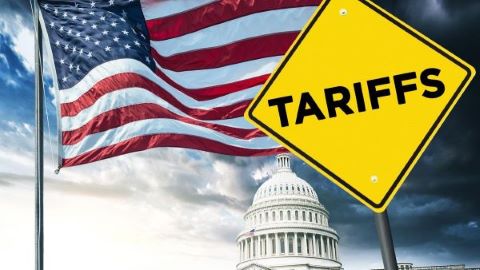
– On April 9, 2025, U.S. President Donald Trump suspended reciprocal tariffs on more than 75 countries for 90 days.
– However, China was excluded from this suspension, and instead, the tariff rate on China was increased to 125%.
– Trump’s announcement of a 90-day tariff suspension led to a surge in Asian markets.
Why 125% Tariff on China:
– The U.S. did not include China in the tariff suspension, and instead, the tariff on China was raised from 104% to 125%.
– Trump did this because China had announced retaliatory tariffs of 84%.
Trump’s Close Associates Also Opposed Tariffs (Some news reports mentioned this):
1. Due to Trump’s tariffs, there had been a decline of nearly $10 trillion in the U.S. and global markets. However, just hours after announcing the suspension of tariffs, the U.S. stock market saw an increase of $3.1 trillion in value.
2. Many of Trump’s close advisors, including Elon Musk, had also advised ending the tariff war. Additionally, several leaders of Trump’s party were also against the tariffs. Mitch McConnell, Rand Paul, Susan Collins, and Lisa Murkowski called it “unconstitutional, harmful to the economy, and diplomatically dangerous.”
3. The tariffs had caused a sudden surge in the sale of U.S. bonds. Crude oil prices had drastically fallen, and the situation was resembling the one during the COVID-19 crisis.
4. Wall Street banks had warned that tariffs would lead to rising inflation, unemployment, and a potential recession in the U.S.
5. The U.S. imports $440 billion worth of goods from China, and a 124% tariff had been imposed on those goods. U.S. companies importing goods from China were finding it difficult to find an alternative, making the suspension of tariffs on other countries essential for these companies.
How much tariff on India
– US President Donald Trump announced a 26% discounted reciprocal tariff on India on April 2, 2025. Which was to come into effect from April 9, but is now likely to come into effect after 90 days.
Source : Dainik Bhaskar | Indian Express
—————-
6. RBI reduced the repo rate by how many basis points to 6% in the bi-monthly monetary policy review (April 2025)?
a. 100
b. 75
c. 25
d. 5
Answer: c. 25
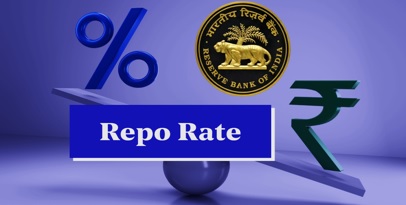
– The meeting of the Monetary Policy Committee (MPC) of the Reserve Bank of India took place on February 9, 2025.
– It reduced the repo rate from 6.25% to 6% in April 2025.
– To promote growth, the interest rate was cut by 25 basis points, bringing it down to 6%.
– The RBI had kept the policy repo rate unchanged at 6.50% until December 2024 for the 11th time.
– After that, the repo rate was changed twice — once in February 2025 and again in April 2025. On both occasions, it was reduced by 25 basis points.
– Along with this, the RBI revised its GDP growth estimate for the financial year 2025-26 to 6.5%, down from the earlier expected growth rate of 6.7%.
Why was the repo rate reduced?
– In fact, the announcement of reciprocal tariffs (such as prepared import tariffs) by U.S. President Donald Trump has created an atmosphere of uncertainty in the world.
– Many experts are predicting a global recession due to this. Higher tariffs could lead to an increase in inflation.
– RBI Governor Sanjay Malhotra stated, “The global economic scenario is changing rapidly. The beginning of the financial year 2026 has been worrying, and some global trade wars are becoming a reality.”
What is the Repo Rate (Repurchase Rate or Repo Rate)?
– Simply put, banks lend us money, and we have to pay interest on that loan.
– Similarly, banks also need large amounts of money for their day-to-day operations, and they borrow money from the Reserve Bank of India (RBI).
– The rate at which the RBI charges interest on these loans is called the repo rate.
Impact of the Repo Rate on the Common Man
– The RBI uses the repo rate as a powerful tool to fight inflation.
– When inflation is very high, the RBI increases the repo rate to reduce the flow of money in the economy.
– When banks can borrow at a lower interest rate, i.e., when the repo rate is low, they can offer cheaper loans to their customers.
– Conversely, if the RBI increases the repo rate, borrowing becomes more expensive for banks, which leads them to raise loan rates for their customers.
Reverse Repo Rate
– This is the opposite of the repo rate.
– When banks have excess funds left after their daily operations, they deposit this money with the RBI.
– The RBI pays interest on this money.
– The rate at which the RBI gives interest on these funds is called the reverse repo rate.

– The Monetary Policy Committee has 6 members, and its ex-officio chairperson is the RBI Governor (Sanjay Malhotra).
Source : The Hindu | Indian Express
—————
7. Folk dancer Ram Sahay Pandey passed away on 8 April 2025, he is credited with popularizing which folk dance?
a. Rai
b. Nimar
c. Kathi
d. Gangaur
Answer: a. Rai

– He was honored with the Padma Shri Award in 2022.
– He was from Madhya Pradesh and was a senior citizen (reported to be 92 years old).
About Folk Art
– Ram Sahay Pandey began working in the field of folk art at the age of 16.
– The Rai dance was considered to be associated with the Bedia community at that time, and it was also linked to the Vaishya-giri tradition.
– Since he was from a Brahmin family, he faced humiliation several times.
– However, to preserve his art, he left his village and moved to another village near Sagar.
– He also gave the Rai dance a new identity across the country.
– In 2022, he was awarded the Padma Shri for this contribution.
Source : The Hindu
—————
8. On which restricted island of Andaman Nicobar, an American citizen entered in March 2025 and was arrested?
a. Cinque Island
b. Neil Island
c. South Sentinel Island
d. North Sentinel Island
Answer: d. North Sentinel Island
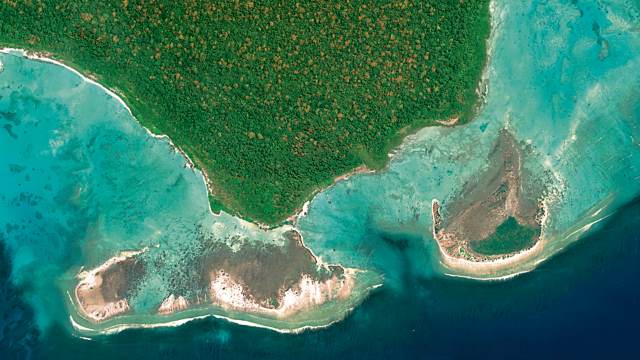
– The Andaman and Nicobar Police arrested an American citizen on March 31, 2025, near the restricted tribal reserve area close to North Sentinel Island.
– The 24-year-old citizen has been identified as Mikhailo Viktorovich Polyakov.
– He is from the state of Arizona in the United States.
– He had been staying at a resort in Port Blair around 10 AM on March 27.
– The Ministry of Home Affairs has informed the American Embassy about the incident.
– An FIR has been registered against him under Section 14/14(A) of the Foreigners Act, 1946, and Section 7/8(4) of the Andaman and Nicobar Islands (Protection of Indigenous Tribes) Amendment Regulation, 2012.
Reached using GPS Navigation
– The police stated that Polyakov used GPS navigation to reach the island.
– Before landing on the island, he surveyed it with binoculars and attempted to attract the attention of the Sentinelese people by blowing a whistle.
– Afterward, he placed a Diet Coke and a coconut on the island, made a video, collected some sand samples, and then returned.
Who are the Sentinelese Tribe?
– It is believed that the Sentinelese people are descendants of human groups that originated from Africa.
– According to human scientists, modern humans (Homo sapiens) originated around 200,000 years ago in Africa.
– Around 60,000 to 70,000 years ago, a small group left Africa and moved eastward, eventually spreading throughout the world.
– During this migration, some groups traveled by sea to the southern coasts of India, the Andaman Islands, and Southeast Asia.
– It is believed that the Sentinelese, Jarwa, and Onge tribes of the Andaman Islands are descendants of these early migrating groups.
– It is likely that these people reached the islands using boats or rafts and then settled there.
Source : Indian Express
—————
9. When is World Homeopathy Day celebrated?
a. 10 April
b. 11 April
c. 12 April
d. 13 April
Answer: a. 10 April
– On this day, 10 April 1755, Dr. Christian Friedrich Samuel Hahnemann, the inventor of the homeopathy medicine system, was born.
– This day is celebrated to commemorate his birth anniversary.
————–
10. The Union Cabinet approved the second phase of the Vibrant Village program, which villages will be helped in development under this?
a. Adjacent to international land borders
b. Most backward villages of the states
c. Poorly populated villages
d. Developed villages
Answer: a. Adjacent to international land borders
– On April 5, 2025, the Union Cabinet approved the Vibrant Village Program-2.
– Prime Minister Narendra Modi has allocated a budget of ₹6,839 crore for this.
– This program will focus on the holistic development of select villages located along international borders.
– In addition to the northern border already covered under VVP-I, the program will also assist in the development of villages located in blocks adjacent to international land borders (ILB).
– The objective of this program is to ensure prosperous and secure borders, control cross-border crimes, integrate the border population with the nation, and provide them with a better quality of life by developing them as ‘the eyes and ears of the Border Security Forces.’
States Where This Program Will Be Implemented
– The program will be implemented in select strategic villages of the states/Union Territories of Arunachal Pradesh, Assam, Bihar, Gujarat, Jammu and Kashmir (UT), Ladakh (UT), Manipur, Meghalaya, Mizoram, Nagaland, Punjab, Rajasthan, Sikkim, Tripura, Uttarakhand, Uttar Pradesh, and West Bengal by 2028-29.
Funding Provided by This Program
– The program will provide funding for the development of infrastructure within villages or groups of villages, value development (through cooperatives, SHGs, etc.), border-specific outreach activities, educational infrastructure such as smart classrooms, development of tourism circuits, and opportunities in border areas.
– These interventions will be border-specific, state-specific, and village-specific, and will be based on village action plans developed using a collaborative approach.
Source : Indian Express
————–
11. Indian President Draupadi Murmu received the ‘City Key of Honor’ award of Lisbon, the capital of which country?
a. France
b. Spain
c. Portugal
d. Slovakia
Answer: c. Portugal
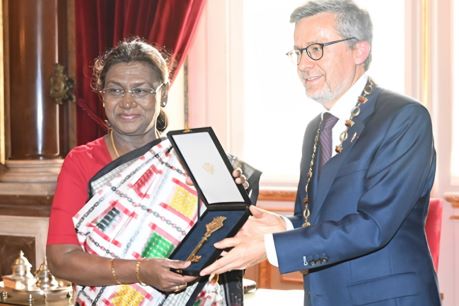
– President Droupadi Murmu arrived in Lisbon, the capital of Portugal, on April 6, 2025.
– This marks the beginning of her four-day state visit to Portugal and Slovakia from April 7 to 10.
– The visit is at the invitation of the President of Portugal, Marcelo Rebelo de Sousa.
– This is the first visit by an Indian President to Portugal in 27 years.
– The Mayor of Lisbon, Carlos Moedas, welcomed President Droupadi Murmu at a ceremony, where she was awarded the City of Honor, making her an honorary citizen of the Seven Hills city.
– Previously, in 1998, then-President K. R. Narayanan had made a state visit to Portugal.
Prime Minister: Luís Montenegro
President: Marcelo Rebelo de Sousa
Population: 10.43 million (2023)
Currency: Euro
Language: Portuguese
Neighboring Country: Spain
Source : The Hindu

